New India: The insecure Rashtra
Anuraag is a ‘Contributing Writer’ at The ArmChair Journal.
Official info- A student pursuing PhD in International Politics (IP), School of International Studies (SIS), Central University of Gujarat (CUG)
Unofficial ‘True’ intro -A Homo Sapien from Guwahati trying to jot down a few lines on history, politics, international relations and short stories. Sometimes likes to rant like a frustrated millenial of the climate change and n- COVID world.
Firstly, the author of this piece does not claim to be an expert in political science, philosophy, or political psychoanalysis. He is a typical, run-in-the mill student who loves to think and reflect. The current circumstances forced me to play out the following thoughts in my mind. These thoughts, to quote Bhagat Singh, have not been sharpened in the ‘whetting stone of ideas.’ These are reflections furnished from peer conversations, social media posts, and the author’s interest in history and politics. Hence, they are open to refinement and criticism.
Often the current circumstances in our country are being compared to the days of the Nazi regime in Germany. More so after the passage of the infamous Citizenship Amendment Act (CAA), 2019. The Act seeks to provide citizenship to ‘persecuted minorities’ such as Hindu, Sikh, Buddhists, Jain, Parsis, and Christians hailing from the countries of Afghanistan, Pakistan and Bangladesh. Apparent is the selective humanitarianism of the bill, which can be understood from one glance. There is an absence of other minority groups such as Shias, Hazaras, Ahmadiyyas, etc. Many legal experts, as well as protesters, have alleged the Act’s ostentatious purpose of establishing a ‘Hindu Rashtra.’ Such allegations have been further strengthened by a few voices supporting the Act, who claim it would help the ‘Hindus living under the tyranny of Islamic countries’; the Act would allow them to return to their ‘original homeland.’ Others have been more explicit with claims such as ‘India is only for Hindus.’
Besides, while introducing the Citizenship Amendment Bill (CAB) in the Parliament, reference was made to the Partition and the creation of Pakistan as a ‘Muslim-majority’ nation- implying that automatically since 1947, India was destined to become a ‘Hindu Rashtra.’ By that logic, the CAA is a step towards the fulfillment of that destiny.
While this piece is not on the CAA and the debates surrounding it, the author wishes to reflect on the alleged goal of the CAA- Hindu Rashtra. Despite 72 years of Independence and the existence of a ‘secular’ Indian state, what nurtures the idea of Hindu Rashtra? How do majoritarian governments come to power? Why is it that despite explicit evidence of state failures and excesses, people still are devoted to the government responsible for the same? I believe the answer to these questions lies at the roots of such Rashtras- insecurity and the inability to see privileges. Throughout history, Rashtra or similar imaginations have always banked on the feelings of insecurity and phobia harbored by majority populations.
Lessons from the past
The Nazi regime rose to power with the promise of restoring the ‘German Pride’ after the humiliating Treaty of Versailles, where Germany was forced to pay reparations and lose some of its erstwhile territories. This sense of insult felt by the German people was capitalized by Adolf Hitler when he promised to restore the honor of ‘Deutschland’ and bring back the golden days of the German empire.
However, the only ‘hurdle’ towards the re-emergence of the German empire was the presence of Jews- the evil ‘Other.’ The ‘otherness’ of Jews were exaggerated by claims of a Jewish conspiracy to conquer the world, Communism being a Jewish scheme to destabilize nations (Karl Marx himself being a Jew), and lastly, the assumed ‘essential Jewish characteristics’ of disloyalty, money laundering, and cunningness. Not to add that later Germany’s defeat in the Great War was attributed to perceived Jewish treachery. Such insecurity and suspect of the Jewish population in Germany further helped bolster the ideas of ‘racial purity of blue-blooded Aryans’ of Germany and, in turn, the ‘pure, golden, Germanic empire.’ Hence the Nazi regime and its idea of Aryan Germanic state rested on two pillars – victimhood and insult after World War I and the general German insecurity regarding Jews and other ‘non-Aryan races.’
Back home, the Hindu Rashtra has rested in the ideas of the ‘golden Hindu utopia’ in the distant past. The progress of Hindu civilization was abruptly halted and later destroyed by the Muslim invaders who ushered in the ‘Dark Ages’ in the history of the Hindu Rashtra. Hence as per the earliest ideologues of Hindutva, it was the destiny of every Hindu to bring back the days of the golden Hindu civilization. Here the idea of Hindu civilization has rested on the myth of the ‘golden Hindu age’ and the victimhood of Hindus under cruel Muslim Sultans. Similar to how the Germans were victims of Allied arrogance post World War I, the Hindu civilization and values were demolished by the intervening era of Islamic rule.
Like the Jew, it is apparent who is the ‘Other’ in the Hindu Rashtra- Muslims and other religious communities like Christians. This is apparent from the words of VD Savarkar, who claimed that while India was both punyabhumi (holy land) and karmabhumi (place of work) for Hindus, but it cannot be the same for Muslims and Christians whose punyabhumi lies in Jerusalem and Mecca, not India. Hence by virtue of being both punyabhumi and karmabhumi for Hindus, India was naturally the pitrabhumi (fatherland) for the former. Still, the same cannot be said for Muslims and Christians- the ‘Other’ to Hindus or sons of the fatherland.
Further fuelling such sentiments were the ‘stereotypes’ attributed to Muslims which persist to date- descendants of invaders, ruthless, meat-eaters, cunning, orthodox, polygamous, and in today’s time- terrorists. Such ideas led to an increase in the feeling of victimhood among Hindus as well as the insecurity and ‘distrust’ towards Muslims. The victimhood and insecurity converge when present-day Muslims are often held responsible for past historical wrong-doings. This was apparent in the violence surrounding the Babri Masjid demolition in 1992. The same can be gleaned from terms used to denigrate Muslims like ‘Babur ki Aulaad’ (Son of Babur), ‘Jinnah ki Aulad’ (Son of Jinnah) or words used in a derogatory context like Mughals, Pakistanis, etc. These derogatory terms carry within them the sense of the Muslims being outsiders (Mughals, Pakistanis) and responsible for the historical injustices to Hindus (Babur, Jinnah). This can be seen similar to the ways in which Jews were seen as being responsible for the defeat of Germany in World War I, and many societal problems were seen as emanating from them.
By the above Hindutva logic Muslims, being the ‘outsiders’ and descendants of ruthless ancestor Sultans, could not be seen as the ‘genuine citizen’ of the country. The net result of these factors has been the distrust and insecurity regarding their aspirations and, more importantly, their patriotism and loyalty. Hence even small acts of the assertion of Indian Muslim identity such as wearing skull-caps, food habits, language, etc. are seen as markers of bigotry and allegiance to religious identity over the nation. Suspicions regarding patriotism can be seen in instances such as the 2016 expulsion of a Muslim MLA from the Maharashtra Assembly for refusing to shout ‘Bharat Mata ki Jai’ or the arrest of Indian Muslim fans of Pakistan Cricket Team in 2017. In today’s times, the insecurity has extended to stereotypes of ‘essentialist’ characteristics of Muslims as being silently loyal to Pakistan or Bangladesh, members of the global Jihadi conspiracy of Dar-ul-Islam (the realm of Islam) and harboring aims of converting India into an Islamic, Sharia state.
These remind one of the stereotypes in Nazi Germany of Jewish conspiracy to rule the world and Communism being a Jewish scheme. On the other side, the insecurities harbored by Hindus include fears of being swamped by ‘Muslim over-population,’ the need to protect the honor of Hindu women i.e., love Jihad and the need to flush out collaborators of Pakistan and Jihadis. Banking on these insecurities, the Right Wing in India came to power with a massive mandate from a population secretly harboring such insecurities. And now supporters of the CAA and a nation-wide National Registrar of Citizens (NRC) give expression to the same insecurities- it would prevent India from being swamped by Muslim population by allowing an increase in the number of Hindu citizens and also it would flush out ‘infiltrators’ (whatever it implies).
Another major pillar of such ‘Rashtras’ or majoritarian imaginations is the inability to perceive one’s privileges. This is especially true with regards to the supporters and sympathizers of the ‘Hindu Rashtra.’ Slogans like ‘Hindu khatre mein hai’ (Hindus are in danger) or the fear psychosis among the majority of the population can be discarded by a mere glance at socio-economic census reports.
As per the 2011 Census of India, around 80% of the Indian population are followers of Hinduism, whereas only 14.2 % of the population adheres to Islam, and only 2.3% are members of the Christian faith. How is it logically possible for 14.2% to overwhelm a gigantic community of 80%? Keeping aside the population figures, numbers from socio-economic status does not bode well for minorities, especially Muslims. Currently, there are only 24 Muslim Members of Parliament (MPs) in India since 1947. They are even underrepresented in administrative and police services where the number of Muslim cadres is less than 3.5% to date. In a region such as UP, the police continue to be dominated by upper-caste Hindus. In the case of education and literacy, as per the Census of 2011, the least educated minority community was the Muslims (42%), followed by Sikhs (32.5%), Christians (25.6%). While high rates of poverty have been registered among Muslims, around 41% of the country’s total wealth is controlled by Hindus, primarily upper castes. Not to mention the highest number of under-trials (55%) are either Muslims, Dalits, or tribals.
From the statistics, can one say that a community with sway in terms of population figures, economic wealth, education capital, and most importantly, political capital be ever threatened by a minority having little or no access or considerable hold in the above parameters?
It is this inability to perceive the privileges enjoyed by Hindus which has led to the easy acceptance of fear and inferior psychosis of ‘being in danger’- such sentiments fuel the support for Hindu Rashtra. By extension, in order not to be swayed by Muslims (a mere 14.2%), the coming of more Hindus through the CAA is the solution for ‘the protection of the declining Hindu population’. Not only in terms of population, but the privilege also extends to subtle areas such as the assertion of identity. As mentioned in an article by journalist Apoorvanand, while the statement of ‘Hinduness’ or Hindu identity is seen as ‘Indian,’ the same cannot be said for ‘Muslimness.’ This can be reflected in the increasing social attack launched on the food habits, clothing as well as religious practices of Muslims. The attacks on Mohammad Akhlaq and Junaid Khan due to alleged rumors of beef consumption, the questioning of azaan or reading namaz in public in Haryana or the stereotype over the ‘hijab’- without asking the opinion of Muslim women (same for the beard and skull cap for men) – are some examples of the looming doubts and fears of expression of Indian Muslim culture.
Any Hindu (including the author) is unlikely to get lynched for eating mutton or vegetables, praying in a temple, or singing jagrata in trains or sporting a tilak or covering of head by ghunghat. Leaving aside dangerous consequences such as lynching, other assertions such as a Muslim surname proves to be difficult in getting rented homes, jobs, or even teaching a language- as witnessed in the case of Sanskrit professor Feroz Khan in Benaras Hindu University (BHU). As per my information, no Hindu person, primarily hailing from upper caste family like myself have ever faced such difficulties within India.
In sum, why does a majority population enjoying myriad privileges feel or perceive threatened communities who are often at a disadvantage in such matters? Similar ignorance of upper-caste opportunities makes the former to decry reservation and social-justice measures as ‘partiality’ or ‘appeasement.’ Despite India having traversed a long way into 21st-century modernity one can see ample examples of how caste still functions subtly in urban landscapes and spaces- the stories of Rohith Vemula, Payal Tadvi, fee hikes in JNU and TISS, the caste ghettoization of floors in flats and the death of sanitation workers.
In a tweet recently noted historian Dr. Ramachandra Guha compared the supporters of CAA and Hindu Rashtra to the ethnocentric Sinhalese of Sri Lanka i.e., a ‘majority with minority complex’ (initially coined by Stanley Tambiah). He noted how ‘Hindus who dominate everything in India: politics, economics, culture, society…. speak and act as if they are hounded and persecuted’. To paraphrase in my own words, Hindus, especially upper caste, who are blinded by their privileges, get alarmed or threatened at the slightest assertion of demand for the same rights or autonomous identity by underprivileged groups like Dalits and Muslims.
This assertion or need for equality fans the flame of insecurity, and hence it gives rise to sympathy for majoritarian ‘Rashtra’. Such support for ‘Rashtra’ built on insecurity and privilege blindness is not unique to India alone. Right-wing majoritarian governments all over the world, such as the governments led by Donald Trump, Viktor Orban, and Boris Johnson, have been propped by the same ‘White majorities with minority complexes’ against Muslims, refugees, immigrants, blacks, LGBTQ members, women, etc.
During the Nuremberg Trials in 1945, Captain G.M. Gilbert, the Army psychologist, said, “Fascism arrives as your friend. It will restore your honor, make you feel proud,..remind you of how great you once were…remove anything you feel is unlike you..”I have often heard supporters of the current regime say that since ‘more than 60 years Hindus have borne the brunt of secularism and minority appeasement. Now it is time for the flourishing of Hindu pride’. As the old saying goes, ‘Pride leads to downfall.’ This happened with German, Japanese, and Italian pride in 1945. One must be careful whether such majoritarian “Hindu Pride” or “Rashtra” might not bring the decline of our nation and culture. It is time to realize the pride in Hinduism, not the one felt by Savarkar and Golwalkar. Still, the genuine ‘Sanatan’ pride felt by Bhakti saints and personalities like Gandhi and Tagore.
Ayam Bandhurayam Neti Ganana Laghuchetasam, Udaracharitanam Tu Vasudhaiva Kutumbakam (Maha Upanishad: Ch6 Verse 72)- “One is my brother the other is not- is the thinking of a small-minded person, for those with a broad, noble mind, the whole world is one family.”
Featured Image Credits: Sri Harsha Dantuluri


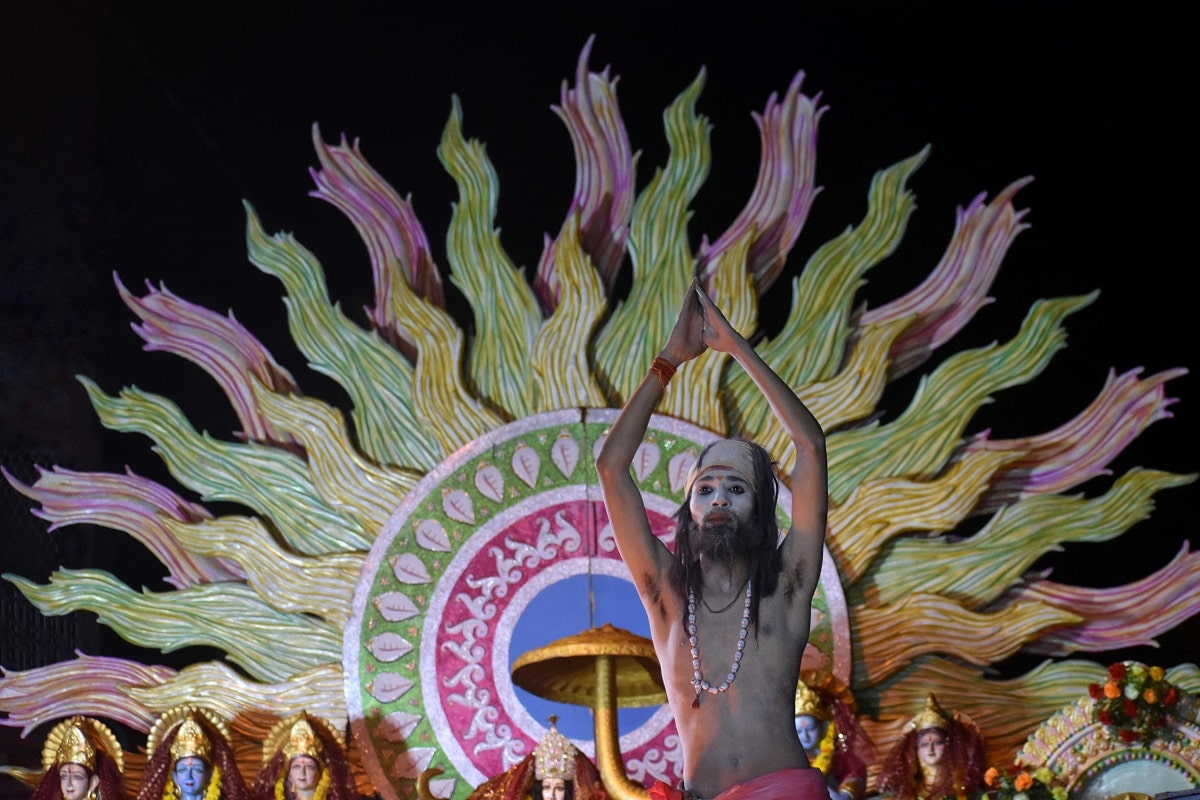

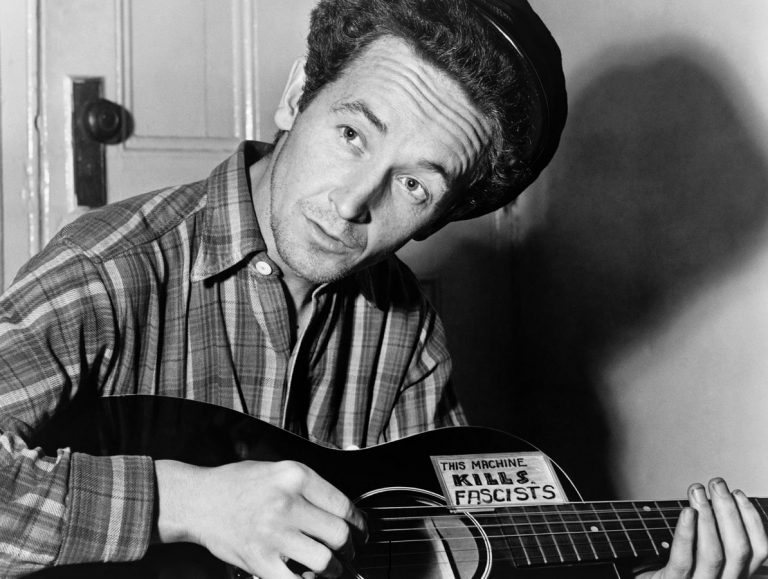
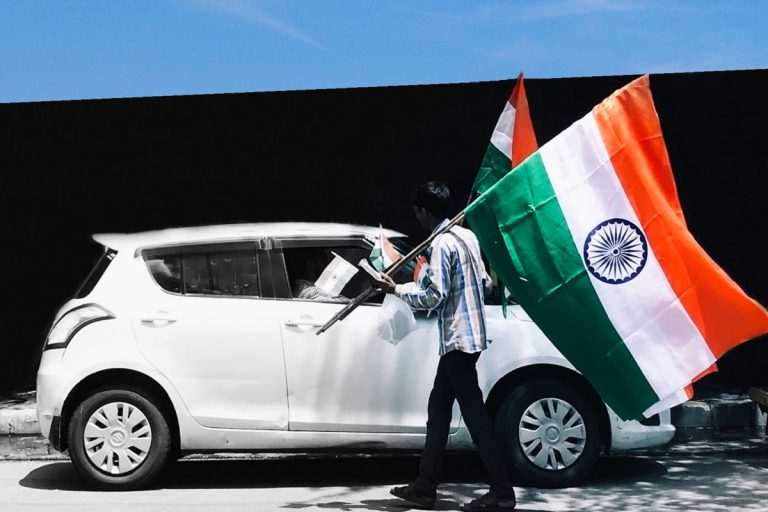
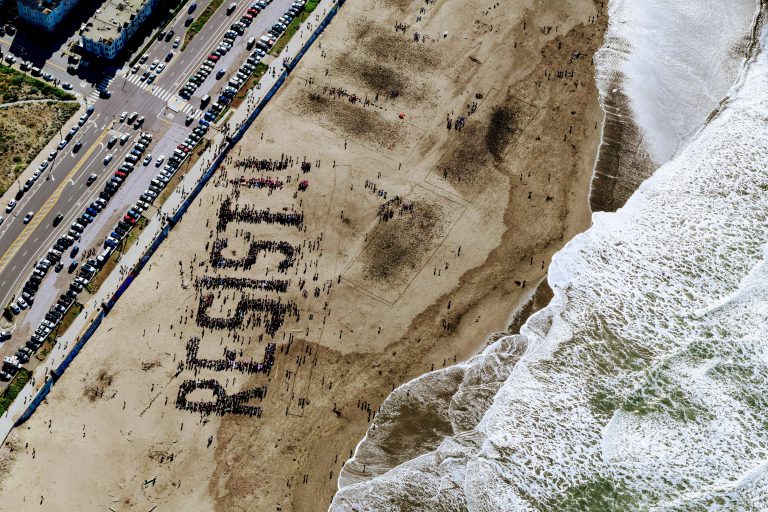
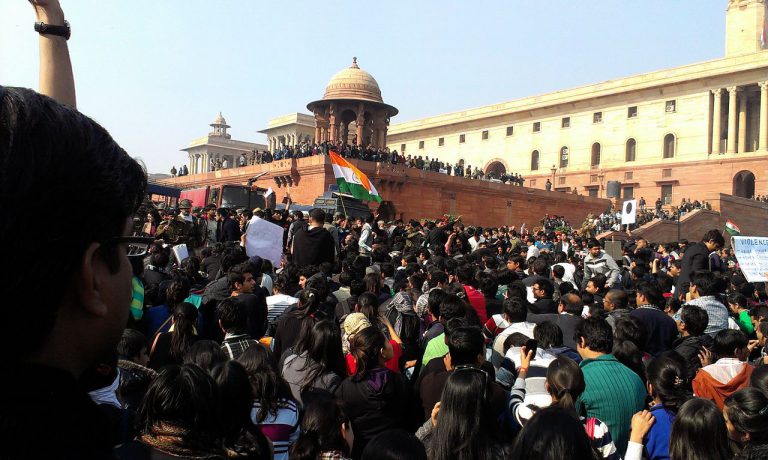
Readers' Reviews (5 replies)